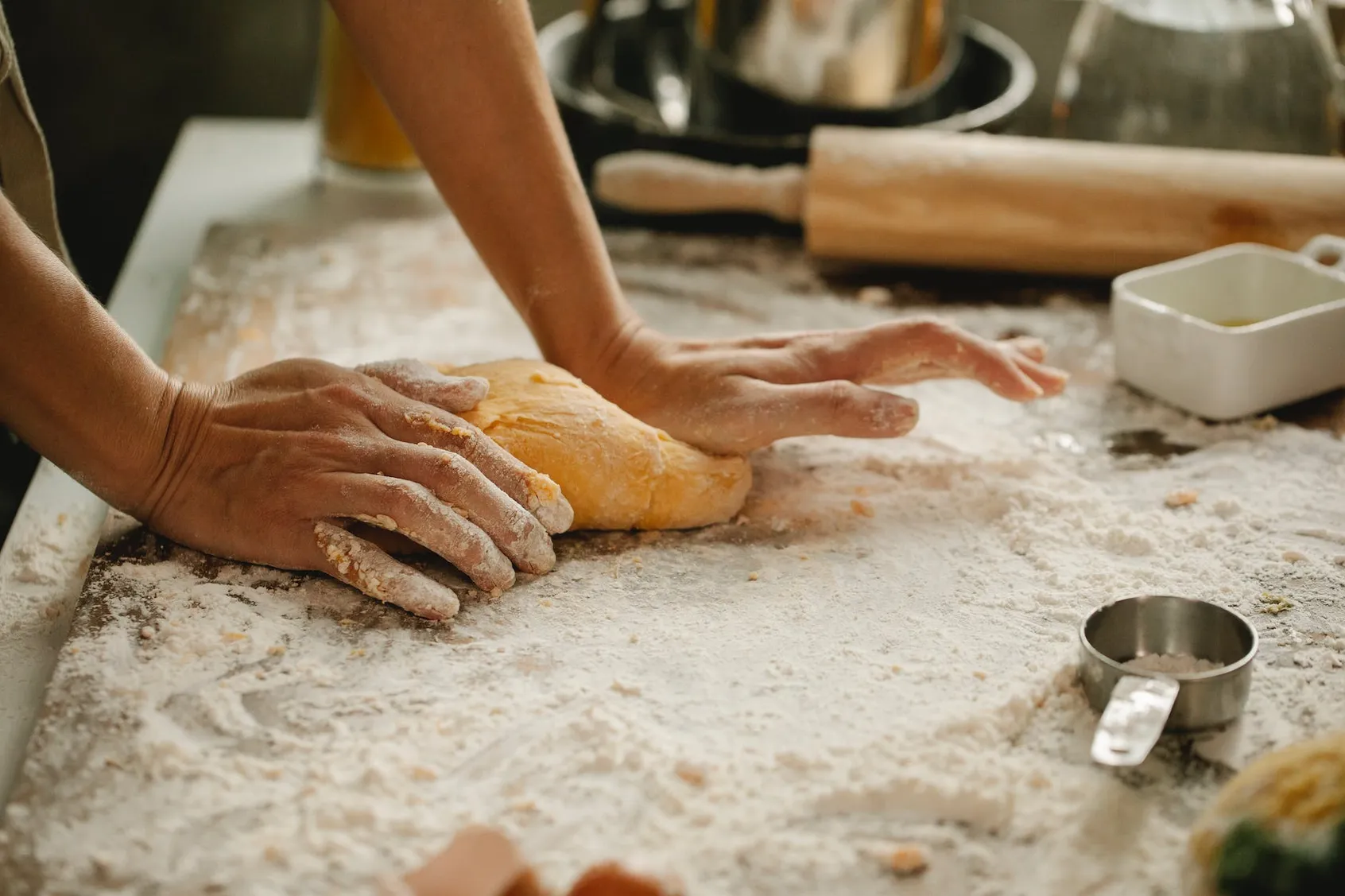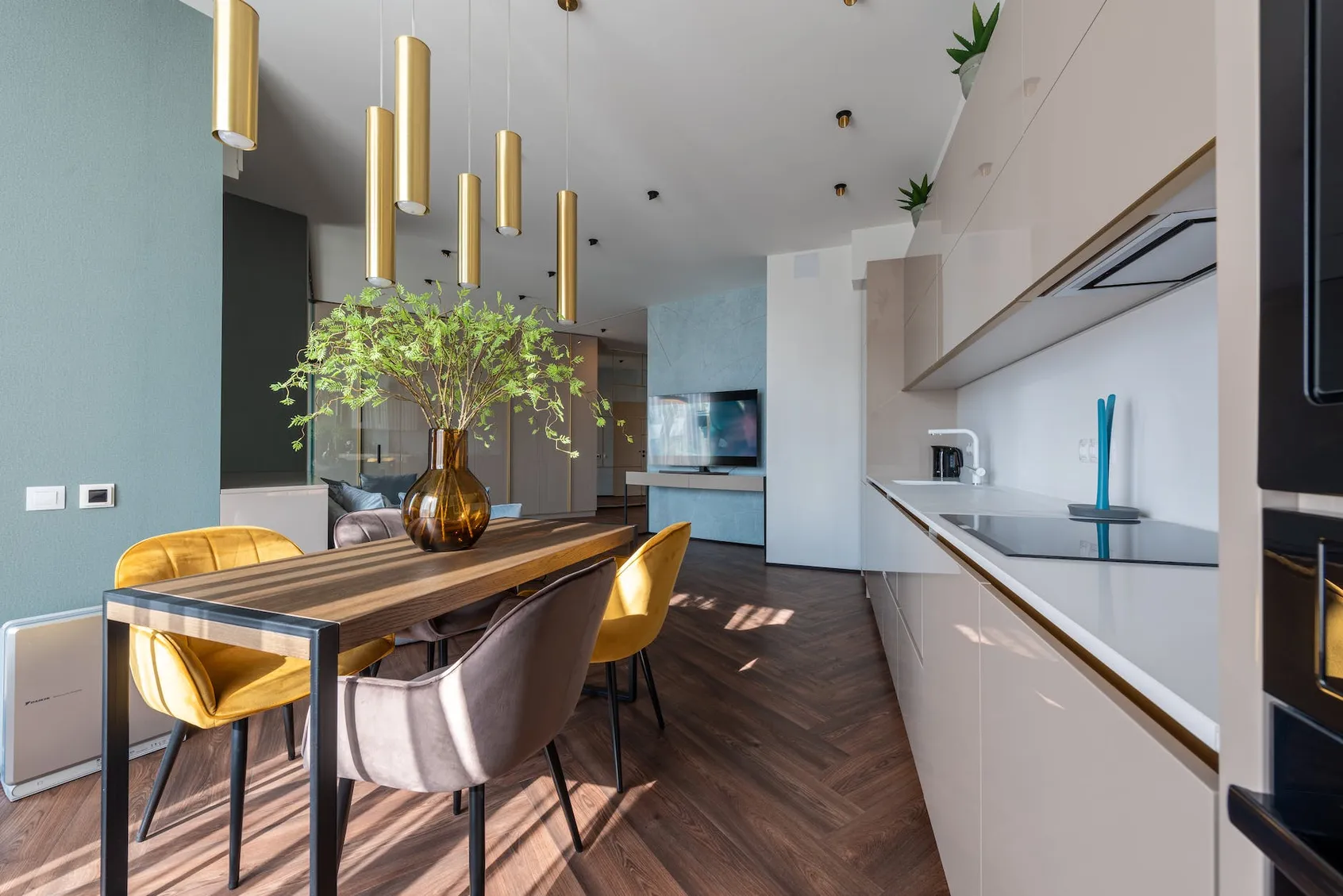What is a wet kitchen? A wet kitchen is an important part of any home, as it is the area where all the cooking, washing, and food preparation takes place. It is a practical and functional space designed to make cooking and cleaning as efficient as possible.
Wet kitchens feature an array of features such as a sink, dishwasher, refrigerator, and cabinets for storage, as well as plenty of counter space for food preparation. This type of kitchen is particularly important for homes that are short on space, as it allows for multiple functions to be fulfilled in a smaller area.
What Is A Wet Kitchen?
A wet kitchen is an area in the home specifically designed for food preparation and cooking. The term ‘wet’ describes the area because it is typically located near a water source such as a sink or a dishwasher, making it an ideal place for washing, chopping, and prepping food. Wet kitchens can range from small spaces with a basic countertop and sink to larger, more sophisticated areas with multiple appliances, storage, and counter space.
A wet kitchen typically includes a sink, refrigerator, dishwasher, range, and cabinets. These items are essential for any kitchen and are necessary for food preparation. The sink is used for washing dishes, vegetables, and fruits. The refrigerator is used to store ingredients and cold dishes, while the dishwasher is used to clean the dishes after they have been used. The range cooks food, while the cabinets store ingredients, utensils, and other cooking supplies.
In addition to the appliances, a wet kitchen has several other features that help make it more efficient. These features include a countertop, which provides additional space for food preparation, and an island, which can be used for additional storage and counter space. Wet kitchens often have a backsplash, which can protect the walls from splashes, as well as a flooring material that is easy to clean.
The layout of a wet kitchen is also important and should be carefully considered when designing the space. Generally, the work triangle – which consists of the fridge, oven, and sink – should be the focus, with adequate counter space and storage for all the necessary appliances and utensils. This will ensure that everything is within easy reach, reducing the time and effort needed for food preparation.
Having a dedicated wet kitchen is an essential part of any home. It provides a safe and hygienic environment for food preparation and cooking, making it easier to keep the kitchen clean and tidy. In addition, a wet kitchen can also save time and energy, as everything is conveniently located in one place, making meal preparation and cleanup quicker and more efficient.

Benefits Of A Wet Kitchen
A wet kitchen has several benefits, which is a separate kitchen area designed for heavy cooking, cleaning, and preparation. Here are a few advantages:
- Keeps the main living area clean: A separate kitchen area can prevent food odor and smoke from spreading throughout the house. This can help keep your home smelling fresher and cleaner and reduce the need for frequent cleaning.
- Increases cooking efficiency: A wet kitchen is generally designed to maximize efficiency and productivity. It usually includes a larger sink, ample counter space, and plenty of storage for cooking utensils and appliances, making it easier to prepare and cook meals.
- Provides a dedicated space for heavy cooking: A wet kitchen is typically used for heavy cooking, which can involve large pots and pans, deep frying, and other messy activities. You can avoid damaging your main kitchen or living area by having a separate space for this.
- Adds value to your home: A well-designed wet kitchen can add value and make it more attractive to potential buyers. Many modern homes now include a separate wet kitchen as a standard feature, particularly in Asian countries where heavy cooking is common.
How To Design A Wet Kitchen?
Designing a wet kitchen can seem daunting, but with some planning and creativity, it can be a functional and stylish space for cooking and cleaning. Here are some tips for designing a wet kitchen:
- Consider the layout: Consider where your sink, stove, and other appliances are located. It’s important to have a functional layout that allows for easy movement and workflow.
- Choose durable materials: Since a wet kitchen is subject to moisture and spills, selecting durable materials such as tile or stainless steel is important. Avoid materials such as wood that can warp or rot with excessive moisture.
- Make use of storage: Take advantage of vertical space and install cabinets and shelves for storage. Consider pull-out drawers and organizers for ease of access.
- Install proper lighting: It’s important to have ample lighting in a kitchen, especially in areas where you will be using water. Consider installing recessed lighting or under-cabinet lighting to brighten up the space.
- Consider ventilation: It’s important to have proper ventilation in a wet kitchen to prevent the buildup of moisture and odors. Install a range hood or exhaust fan to keep the air circulating.
Remember to incorporate your style into the design, whether through colorful backsplash tiles or unique hardware on your cabinets. With these tips in mind, you can design a functional and stylish wet kitchen.
Wet Kitchen Storage Solutions
You can use many wet kitchen storage solutions to keep your kitchen organized and functional. Here are a few ideas:
- Install shelves or racks to hold dish towels, dishcloths, and other wet items. This will keep them off the counter and out of the way.
- Use a dish rack or drainer to hold wet dishes as they dry. Many different types of dish racks are available, from freestanding to over-the-sink models.
- Add hooks or pegs to the sides of cabinets or walls to hang utensils, pots, and other wet items. This will help keep them organized and within easy reach.
- Use a lazy Susan or corner cabinet organizer to maximize the storage space in your kitchen. These solutions can help you access hard-to-reach items and keep everything organized.

Wet Kitchen Appliances And Fixtures
Wet kitchen appliances and fixtures are essential in any kitchen, as they help with various cooking and cleaning tasks. Some common wet kitchen appliances and fixtures include:
- Sink: A sink is one of the most important fixtures in any kitchen. It is used to wash dishes, prepare food, and clean up after meals.
- Dishwasher: A dishwasher is a convenient appliance that helps to clean dishes efficiently and quickly.
- Garbage disposal: A garbage disposal helps eliminate food waste and keeps the kitchen clean and hygienic.
- Faucet: A faucet is an essential fixture in every kitchen. It provides water for various purposes, such as cooking, cleaning, and drinking.
- Blender: A versatile appliance that can make smoothies, purees, and sauces.
- Food processor: A food processor is another useful appliance that can chop, grind, and puree food.
- Mixer: A mixer is essential for baking and cooking. It can be used to mix batter, dough, and other ingredients.
Advanced Wet Kitchen Features
Advanced wet kitchen features refer to modern amenities that make cooking and cleaning in the kitchen easier and more efficient. Here are a few examples:
- Smart faucets: These devices allow you to control the flow and temperature of the water using your voice, touchless sensors, or smartphone app. Some models even include features like water filtration and preset temperature settings.
- Induction cooktops: These cooktops use electromagnetic fields to heat pots and pans instead of direct heat like traditional stovetops. They offer precise temperature control, faster cooking times, and energy efficiency.
- Integrated dishwashers: These dishwashers can be installed seamlessly into your kitchen cabinetry, leaving your countertops and floor space free from clutter. They also offer multiple wash cycles, customizable settings, and energy-efficient options.
- Built-in ovens and microwave ovens: These features are perfect for those who love to bake or cook multiple dishes at once. They’re built into the wall and offer advanced features like convection heating, self-cleaning functions, and touchscreen displays.
Common Mistakes To Avoid When Designing A Wet Kitchen
When designing a wet kitchen, there are a few common mistakes that you should avoid to ensure that it is functional and practical:
- Focusing solely on aesthetics: While a visually appealing kitchen is great, prioritizing functionality is also important. Avoid designing a difficult kitchen to work in just to achieve a certain look.
- Not considering proper ventilation and drainage: A wet kitchen can create a lot of steam and moisture, so having adequate ventilation and drainage is crucial to prevent issues like mold and mildew.
- Neglecting storage and organization: A kitchen that lacks storage or is poorly organized can be frustrating and difficult to work in. Make sure to include ample storage space for items like dishes, utensils, and pantry items.
- Overlooking the importance of lighting: Proper lighting is key when working in a kitchen, especially when dealing with wet areas. Avoid dim lighting or a lack of task lighting that can impair your ability to see what you’re working on.
- Not selecting the right materials: When designing a wet kitchen, choosing materials that can withstand moisture and humidity is important. Avoid using materials prone to damage in these conditions, such as unfinished wood or certain types of countertop materials.
Best Practices For Cleaning And Maintenance Of A Wet Kitchen
Maintaining a clean and functional wet kitchen is crucial for any restaurant or home. Here are some best practices for cleaning and maintenance of a wet kitchen:
- Clean up spills immediately: Spills should be cleaned up as soon as possible to avoid slips or falls. Using a non-slip mat on the floor can also help reduce the risk of accidents.
- Follow a cleaning schedule: Regularly cleaning surfaces, equipment, and floors is necessary to prevent the buildup of grease and grime. Make sure to follow a schedule that works for your kitchen’s needs.
- Use appropriate cleaning supplies: Use cleaning supplies designed for commercial kitchens and safe for food preparation areas. Avoid using abrasive cleaners that can damage surfaces and equipment.
- Deep clean regularly: A deep clean should be done regularly to remove any buildup that cannot be removed with daily cleaning.
- Maintain equipment: Regular maintenance of equipment such as ovens, fryers, and refrigerators is necessary to keep them functioning properly and prevent breakdowns.
Wet Kitchen Trends And Innovations
Wet kitchens are becoming increasingly popular due to innovative trends and available features. Some of the latest and most popular wet kitchen trends and innovations include:
- Smart kitchen technology: From voice-controlled faucets to Wi-Fi-enabled appliances, smart technology transforms how we cook and clean in the kitchen.
- Open shelving: Many homeowners are opting for open shelves instead of closed cabinets to create a more open and airy feel in the kitchen.
- Large, deep sinks: A trend towards larger, deeper sinks has emerged recently as homeowners look for more functional and practical options for washing dishes and preparing food.
- Multi-functional islands: Kitchen islands are becoming more versatile and functional, with built-in appliances and storage options to create an all-in-one cooking and entertaining space.
- Bold colors and textures: Vibrant colors and bold textures are returning in the wet kitchen, as homeowners look to add personality and flair to their cooking spaces.
Best Materials For Wet Kitchen Countertops
When it comes to wet kitchen countertops, you want a durable material that is resistant to moisture and stains. Here are some of the best options:
- Granite: This natural stone is highly durable and resistant to water, stains, and scratches. It also adds a luxurious look to your kitchen.
- Quartz: Engineered quartz is made from a mixture of quartz and resin, making it highly resistant to water and stains. It also comes in a wide range of colors and patterns.
- Stainless steel: This material is durable and resistant to moisture and adds a modern and sleek look to your kitchen. Plus, it’s easy to clean and maintain.
- Solid surface: Materials like Corian and Swanstone are non-porous and resistant to water, stains, and scratches. They also offer a seamless look since they can be custom-fabricated to fit any space.
Difference Between Dry And Wet Kitchens
A wet kitchen is an area in the home used primarily for food preparation and cooking. It is also sometimes referred to as a “working kitchen” because of the activities it is used for. This type of kitchen differs from a dry kitchen, which is mainly used for eating and entertaining. A wet kitchen is an important part of the home because it provides a safe and sanitary place to prepare meals for the family.
A wet kitchen is designed to be a practical and efficient workspace for cooking. It typically features large countertops, deep sinks, and plenty of storage. Cabinets, drawers, and shelves are important for storing ingredients, utensils, and kitchen appliances. Wet kitchens usually have a stove, oven, refrigerator, and freezer.
The wet kitchen is also designed to be a hygienic place to prepare food. Keeping the area clean and free of germs and bacteria is important. Cleaning supplies such as sponges and disinfectants should be available to help maintain a sanitary environment. Separating cutting boards, utensils, and other food preparation items from areas where food is stored and cooked is also a good idea.
The wet kitchen is important because it allows for proper food preparation and storage. This can help to prevent contamination and food-borne illnesses. It also helps keep the home organized and clutter-free, which makes it more enjoyable to be in. The wet kitchen also helps to keep the family safe by providing a safe area for food preparation and cooking.
Conclusion
A wet kitchen is an important part of any home and is a great way to ensure that the kitchen is kept clean and organized. Wet kitchens are designed to make life easier, providing a convenient way to separate food preparation, cooking, and cleaning areas.
A wet kitchen is also beneficial in preventing the spread of germs and bacteria, as the water used in the kitchen helps to keep surfaces clean. Ultimately, wet kitchens are essential for maintaining a healthy and safe kitchen environment and for making the kitchen a more pleasant place to work.
Frequently Asked Questions:
How do you make a dry kitchen?
One should focus on storage, appliances, and decor to create a functional dry kitchen. Cabinets and shelves can be installed for organizing utensils and cooking supplies, and appliances such as a stove, oven, microwave, and refrigerator should be present. A counter or island for food preparation and serving may also be added, along with neutral decor and artwork for a welcoming touch.
What is a dry pantry?
A dry pantry is a term used to refer to a room, closet, or cabinet that is used to store non-perishable food items such as grains, flour, pasta, canned goods, snacks, and other dry goods. It is a great way to keep items organized and readily accessible.
What type of materials should I use for a wet kitchen?
You should use waterproof and easy-to-clean materials for a wet kitchen, such as stainless steel, ceramic tile, granite, and quartz. For countertops, you should opt for heat-resistant materials, such as quartz or granite. You should choose slip-resistant materials, such as ceramic tile or vinyl flooring.
How do I design a wet kitchen to maximize space?
To optimize space in a wet kitchen, consider the layout and flow, use space-saving features and vertical storage, place appliances strategically, choose durable materials, and be creative with storage solutions such as built-in shelving.
What are the benefits of having a wet kitchen?
A wet kitchen offers increased safety, improved hygiene and sanitation, efficient use of space, easier cleaning and maintenance, protection from moisture and food splatters, and saving energy by reusing water. It has a more efficient layout with wet areas in one place, making food preparation and cleaning easier. It also has proper drainage systems and splashbacks to prevent water from spreading to other areas.
What are the additional features of a wet kitchen?
A wet kitchen is a kitchen that has running water and a sink for cooking and cleaning. It may also include an oven, stove, refrigerator, and counter space. These features make it functional for preparing and cooking food. It is an important part of any home.
